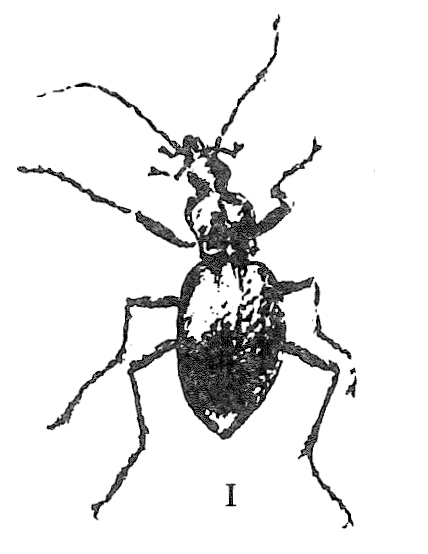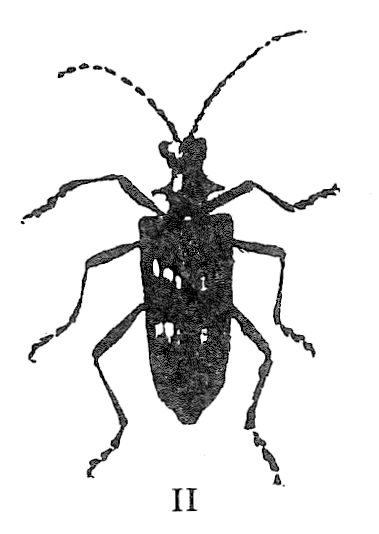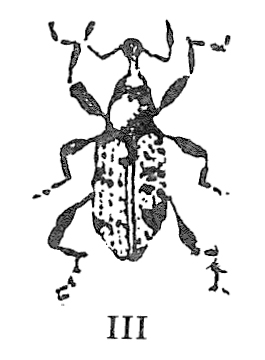To W. D. Fox [30 June 1828]
[Shrewsbury]
My dear Fox,
I do not know whether to begin by giving you a good scolding, or by thanking you over & over again for your most acceptable parcel. Your letter was perfect & informed me of every thing I wanted to hear about & you really were most goodnatured to think of forwarding Way’s1 letter.—
And now for the scolding; but I must confess I am not very certain about the grounds of it. Did I pay you the 10"6d for the Poor Irishman?2 if I did not; you must have been aware of it,—& therefore you acted like a shabby fellow, in allowing me to be so.— I will pay you the 10"6d & the 1£ for the pins, (which were just what I wanted & I am extremely obliged for you thinking of me.) when we meet at Cambridge.—
I am very glad you have had so pleasant a time in London. it almost makes me wish to be there: but nevertheless I had much rather be wandering with you in the wilds of Derbyshire; than be idling in that horrid smoky wilderness London.— I envy you very much in going to the Opera, for I have at last got a very decided taste for Music; When Roper3 was here we had a concert from morning to night: his visit here was very pleasant as it is quite delightful to hear anyone sing with such spirit, & excellent good taste.—
And now for Insectology, Way need not doubt my ardour as it is I think redoubled; but my success does not equal what it did in Cambridge.
Fig: (I.) is this a Cychrus? I make it so by Lamarck.4 (N.B. when you recognize an insect by my description, always say whether you possess it). fig II is a most splendid Cerambre—what is it? fig III, do you know this insect? I have also take another very large grey looking Curculio? Also a Cerambyx twice as big as that common one, with horn coloured elytra & the stomach marked with bands something like a Cock chafer. About 19 new Carabi—several Coccinellæ, & other insects which I cannot describe.—
Taken in plenty, the little beetle that destroy Scotch firs. What is its name.—
The Crysom: (fulgida(?)5 the same as your one specimen, is the greatest profusion & am quite convinced it is a different insect from the little one you took in plenty in the Fens, as it never lives but on one plant, some sort of dead nettle.— of course I procure duplicate specimens for you of all insects that I can.
I have adopted Way’s plan of having a store box, & only having a few specimens of each insect in my regular case:—
We heard from Erasmus the other day just when he was on the point of leaving Vienna he is now on his road to Munich or Milan all letters must be sent to the latter place. I do not think he much admires Vienna, for it has been literally a perfect state of solitude for him, latterly he has got to know one single family Vivenot, a German Doctor, very pleasant people but who the devil would not be pleasant, when one has been silent for nearly a month?— If you have written to him either at Vienna or Munich, you need not be alarmed about their arrival, as he has left orders that all letters may be forwarded.— On Wednesday I set out on my Entomo-Mathematical expedition to Barmouth; by the blessings of Providence I hope the science will not drive out of my poor noddle the Mathematics.— Talking of the science I must tell you, that since beginning this letter, I think, sir, upon my soul sir, I will take my oath sir, (as Way would say), that I have discovered, that I posses a valuable insect, viz Melasis Flabellicornis, as the description & habits in Samouelle6 & Lamarck perfectly agree.— look and see, what Samouelle says, “once taken (continued from the cover)7 in Norfolk, by J. C. Curtis”8 &c &c; also I have taken 2 new Elaters; one with reddish brown elytra, the other with yellow elytra, red thorax & black head.— Also, have taken Tritoma Bipustulatum, vide Samouell. Pl. II.;9 also a small black Byrrhus, with brownish band across the back; also a small Silpha, with a red spot on each elytron; also have twice !seen! the Bombylius Minor, but curses on my clumsiness missed catching them.—
You will hardly believe how bumptious I am grown, in the height of my presumption, I put down the Leptura Arietes, as the Saperda Lineato Colls. because it had a yellow ring round its neck! & as for the Melandrya I thought it at least a new species if not Genus.— I must confess I felt a pang of jealousy when I read over the splendid list of yours & Way’s Captures.—
What a pity it is that you do not collect letters, like insects, birds & beasts. What a glorious specimen this would be of an interesting, neatly written & elegantly composed epistle: but my dear Fox remember this, although my prosing unscientific details about insects may be very tiresome to you, do not for one instant suppose, that your letters are so to me, for you cannot conceive, with what great pleasure I look out for an Entom: Letter now that I have nobody to talk to.
I return Way’s letter & must again thank you for it, when you write remember me most kindly & tell him, if he has a fit of idleness, he knows how glad I should be to hear from him.—
When you write, & I hope it will be soon, direct to Shrewsbury, as usual
Believe me my dear Fox | Yours ever sincr | C. D.
Shall I or will you write to ⟨ ⟩ M.A., if you say nothing about ⟨ ⟩ I shall, as soon as I hear from y⟨ ⟩ alls well Wed.10
| jet black taken under stones in a boggy situation One of the carabidæ Thorax drawn too large | the insect is more beautiful than the drawing | larger than Curc. niger, but black, marked with yellow dots. Taken on a Pine tree |

|

|

|
Footnotes
Bibliography
Lamarck, Jean Baptiste Pierre Antoine de Monet de. 1815–22. Histoire naturelle des animaux sans vertèbres, présentant les caractères généraux et particuliers de ces animaux, leur distribution, leurs classes, leurs familles, leurs genres, et la citation des principales espèces qui s’y rapportent; précédée d’une introduction offrant la détermination des caractères essentiels de l’animal, sa distinction du végétal et des autres corps naturels, enfin, l’exposition des principes fondamentaux de la zoologie. 7 vols. Paris: Verdière [and others].
Samouelle, George. 1819. The entomologist’s useful compendium; or, an introduction to the knowledge of British insects. London. [Vols. 1,7]
Summary
Mainly concerned with entomological specimens CD has recently captured. Three figures of beetles are included.
Letter details
- Letter no.
- DCP-LETT-43
- From
- Charles Robert Darwin
- To
- William Darwin Fox
- Sent from
- [Shrewsbury]
- Postmark
- Shrewsbury JU 30 1828 153
- Source of text
- Christ’s College Library, Cambridge (MS 53 Fox 2)
- Physical description
- ALS 6pp
Please cite as
Darwin Correspondence Project, “Letter no. 43,” accessed on 27 November 2024, https://www.darwinproject.ac.uk/letter/?docId=letters/DCP-LETT-43.xml
Also published in The Correspondence of Charles Darwin, vol. 1


